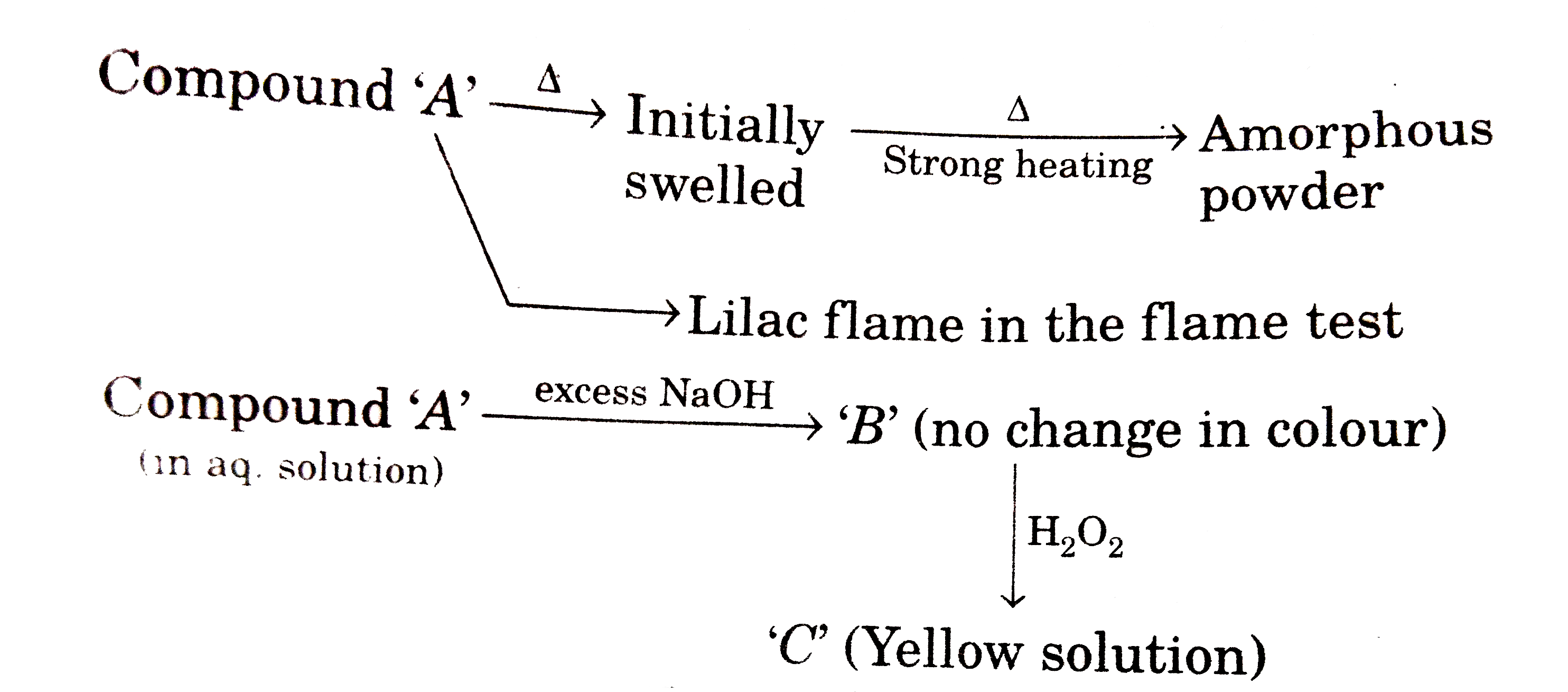When BeO react with HF in the presence of ammonia a compound A is formed On heating a compound B is formed along with ammonium fluride the oxidation state of Be in compound B is ?
To solve the problem step by step, we will analyze the reaction of BeO with HF in the presence of ammonia, identify the compounds formed, and then determine the oxidation state of beryllium in compound B.
Step 1: Identify the Reaction
When beryllium oxide (BeO) reacts with hydrofluoric acid (HF) in the presence of ammonia (NH3), a compound A is formed.
Step 2: Determine Compound A
The reaction between BeO and HF typically produces beryllium fluoride (BeF2) and water. However, in the presence of ammonia, the reaction can lead to the formation of a complex or a different product. For this problem, we assume that compound A is a complex of beryllium fluoride and ammonia.
Step 3: Heating Compound A to Form Compound B
Upon heating compound A, we can expect the decomposition or transformation of this complex into beryllium fluoride (BeF2) and ammonium fluoride (NH4F).
Step 4: Identify Compound B
From the above step, we conclude that compound B is beryllium fluoride (BeF2).
Step 5: Determine the Oxidation State of Beryllium in Compound B
To find the oxidation state of beryllium in BeF2:
- Fluorine (F) has an oxidation state of -1.
- In BeF2, there are two fluorine atoms contributing a total charge of -2.
- The overall charge of the compound BeF2 is neutral (0).
Let the oxidation state of beryllium (Be) be x. The equation can be set up as follows:
x+2(−1)=0
x−2=0
x=+2
Thus, the oxidation state of beryllium in compound B (BeF2) is +2.
Final Answer
The oxidation state of Be in compound B is +2.
---
When beryllium oxide (BeO) reacts with hydrofluoric acid (HF) in the presence of ammonia (NH3), a compound A is formed.
The reaction between BeO and HF typically produces beryllium fluoride (BeF2) and water. However, in the presence of ammonia, the reaction can lead to the formation of a complex or a different product. For this problem, we assume that compound A is a complex of beryllium fluoride and ammonia.
Upon heating compound A, we can expect the decomposition or transformation of this complex into beryllium fluoride (BeF2) and ammonium fluoride (NH4F).
From the above step, we conclude that compound B is beryllium fluoride (BeF2).
To find the oxidation state of beryllium in BeF2:
- Fluorine (F) has an oxidation state of -1.
- In BeF2, there are two fluorine atoms contributing a total charge of -2.
- The overall charge of the compound BeF2 is neutral (0).
x+2(−1)=0
x−2=0
x=+2
The oxidation state of Be in compound B is +2.
Topper's Solved these Questions
Similar Questions
Knowledge Check
On heating sodium metal in a current of ammonia the compound formed is
ASodium nitrideBSodium hydrideCSodium amideDSodium azide.The ionic compound A+B− is formed when the
Aelectron gain enthalpy of B is highBionization energy of A is lowClattice energy of AB is highDlattice energy of AB is lowA transition metal A has 'spin-only' magnetic moment value of 1.8 Bm. When it is reacted with dilute sulphuric acid in the presence of air, its compound B is formed. B reacts with compound C to give compound D with the liberation of iodine. Then the metal A and compounds B, C and D are respectively
ATi,TiSO4,KIandTiI2BZn,ZnSO4,KIandZn2I2CCu,CuSO4,KIandCu2I2DCu,CuSO4,Cu2I2andCuI2
When magnesium burn in air , another compound is formed along with magnesium oxide . Name the compound.
View Solution
The compound 'B' is having oxidation state of:
View SolutionWhich compound is formed when iron reacts with carbon?
View SolutionWhich compound is formed when iron reacts with carbon?
View SolutionOn heating sodium metal in a current of dry ammonia, the compound formed is
View Solution
